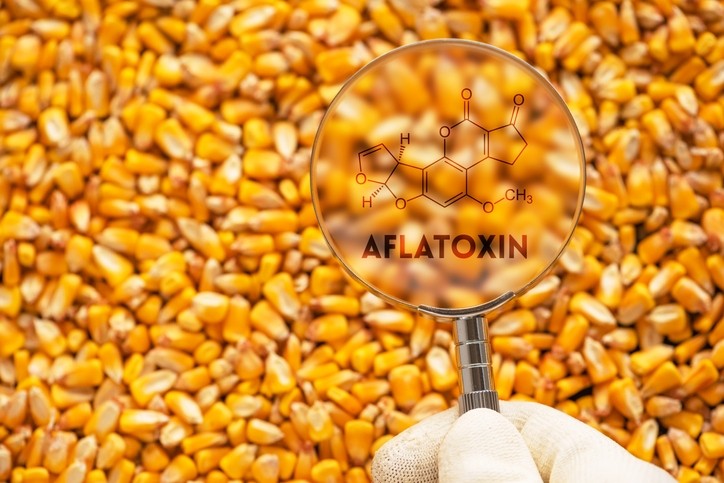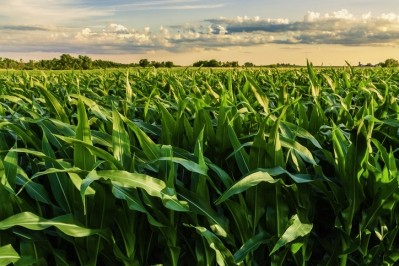Reports from the World Nutrition Forum in Cancun, Mexico
Challenges and trends in mycotoxin analysis

Most predictions indicate that climate change scenarios, with global warming, could affect agriculture and increase and change the threat of fungal invasion of crops so a rapid, low-cost, high-throughput analytical approach for mycotoxin detection in the field would support the industry in making rapid management decisions on the acceptance or rejection of a lot, according to various researchers.
Professor Rudolf Krska, who is based at the University of Natural Resources and Life Sciences, Vienna (BOKU), was speaking about the advances, to date, in mycotoxin analysis at dsm-firmenich’s World Nutrition Forum (WNF) in Cancun earlier this month.
“It is remarkable that there has not been any noteworthy progress in nearly 10 years. That is frustrating. The major breakthroughs were between 2005 and 2015, and in the lab-based environment,” he told this publication.
The fastest techniques available for analysis of regulated toxins today, said Prof Krska, are ones based on liquid chromatography coupled to tandem mass spectrometry (LC-MS/MS), the method considered the gold standard in mycotoxin analysis over the past two decades, along with immunoanalytical methods for the rapid screening of mycotoxins - enzyme linked immunosorbent assays (ELISA), and lateral flow assays.
“With mass spectrometry, we are now able to detect, certainly in my lab, 1,400 contaminants in 45 minutes,” he said.
Though, he said, LC-MS/MS based methods still require expensive equipment and highly trained personnel.
Lateral flow tests
ELISA methods are commercially available and routinely used. Assessment of mycotoxin contamination can be performed with ELISAs in 30 minutes to two hours. Easy-to-use lateral flow assays (LFAs) allow for rapid semi-quantitative screening with measurement times of five to ten minutes, excluding sample preparation time.
Both approaches require only minimal sample preparation, which involves homogenization and extraction thanks to the selectivity of the employed antibodies.
ELISA methods are ideal for checking incoming raw grain rather than complex feed, he said. Lateral flow devices are useful for pre- and post-harvest checks.
However, both assay types are still relatively labor and consumable intensive, they suffer from cross-reactivities, matrix interferences and require basic laboratory skills and equipment, he explained.
Spectroscopy methods
So a wide variety of spectroscopic methods has been assessed for mycotoxin analysis including, infrared (IR), Raman, fluorescence, surface plasmon resonance and X-Ray spectroscopy, as well as imaging techniques.
Among those, IR spectroscopy has a long history in the analysis of agricultural crops. IR spectrometers are relatively cheap and often no solvents are required, rendering IR spectroscopy as a green analytical technique, he said.
Operation of a routine IR spectrometer is straightforward, allowing sample throughput times of two minutes, and, thus, reducing the cost per analysis down to a few dollars, once a proper calibration is established. “However, the lack of sensitivity and the overlapping absorption characteristics of major sample matrix components prevent the direct determination of food contaminants, such as mycotoxins, at trace levels."
By measuring fungal-induced matrix changes with near IR and mid IR (MIR) spectroscopy as well as hyperspectral imaging in the carbohydrate and protein region, researchers have realized the indirect determination of mycotoxins in food crops, he explained in a paper.
Additional studies underline that such IR spectroscopic platforms have immense potential for rapid analysis of toxins along the food and feed supply chain, said the specialist.
IR spectroscopy would seem to be the ideal candidate for in field or on-site analysis, added Prof Krska.
Tyska et al. (2021) explored near-IR spectroscopy (NIRS) to quantitatively predict fumonisins and zearalenone in Brazilian corn samples. They found no significant statistical difference between the 676 values obtained with the LC-MS/MS reference method and the zearalenone values predicted by NIRS for their test set. However, there are no published reports on the validation of IR methods according to official regulations.
Portable solutions
The EU funded project, PHOTONFOOD, is pursuing an approach involving novel MIR sources to develop portable solutions that enable the on-site screening of mycotoxins.
Such developments could, in the future, facilitate the analysis of mycotoxins, including aflatoxins, at the industry level, at the required regulatory limits, and enable the screening of mycotoxins in more complex food and feed matrices, believes Prof Krska.
The idea is to allow on-site measurement of contaminants at the required detection levels in the ppb range. PHOTONFOOD aims to develop an integrated solution that combines innovations in smart paper-based sample treatment, mid-infrared (MIR) sensing and advanced data analysis.














